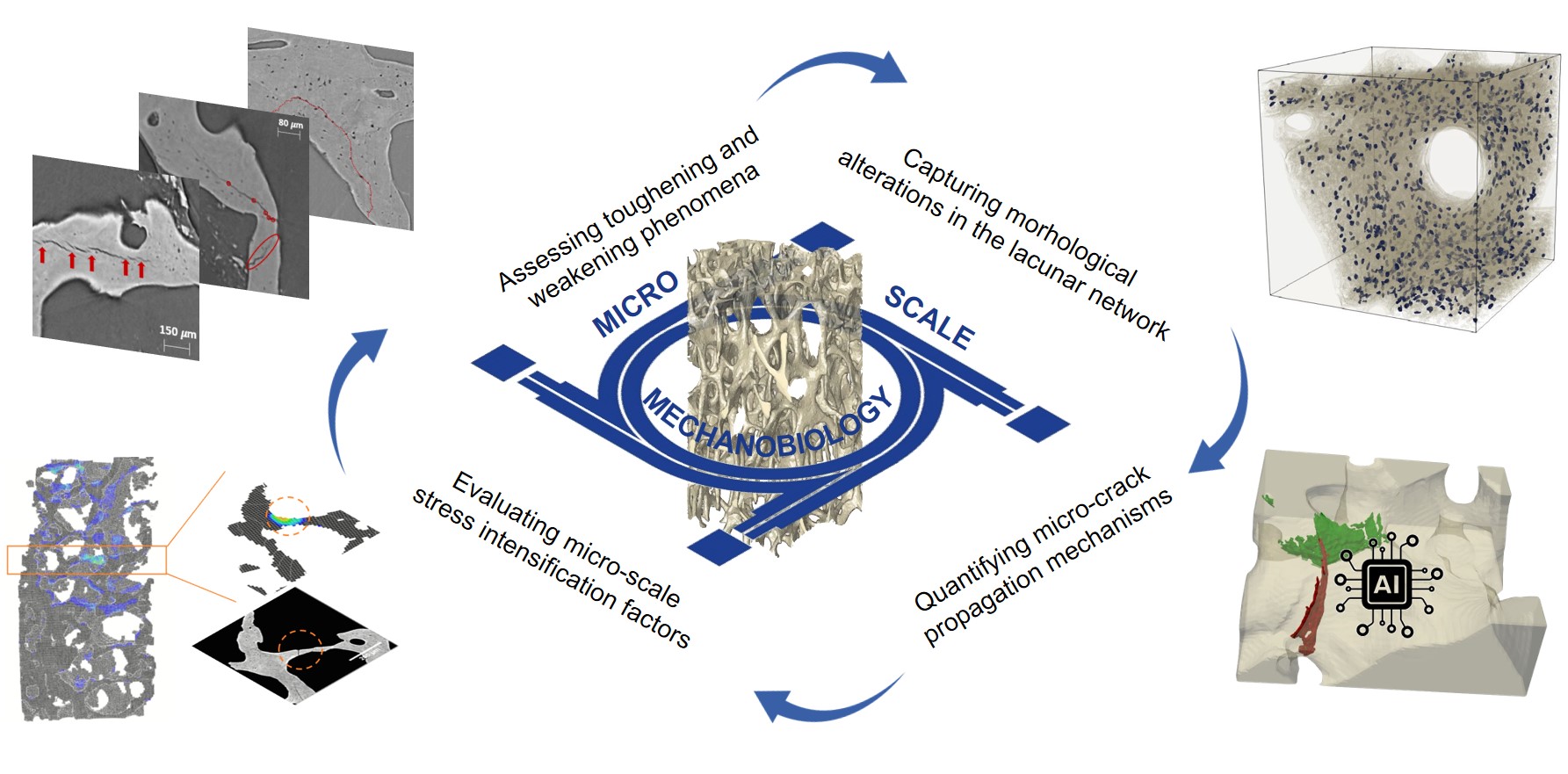Synchrotron light and AI to prevent age-related fractures
|During the last century, improvements in food, health care, and hygiene allowed a relevant increase in life expectancy, especially in western countries. Consequently, chronic conditions among older people, such as osteoporosis, are set to escalate. Therefore, it is essential to understand better and even anticipate fracture propagation in human bones to prevent fractures with consequent long-term care and negatively impacting the quality of life.
In a study supervised by professor Laura Maria Vergani (Polytechnic of Milan), with the contribution, among others, of the CERIC funded PhD student Lorenzo D’Amico (Elettra Sincrotrone Trieste), the authors provided novel insights into the comprehension of micro-damage in human bones exploiting synchrotron scans of human bone fragments under increasing compression levels. The tests were realised on bone fragments from femoral heads collected during routine hip replacement surgeries. This specific anatomical site was selected because fractures in the femoral head are reported to be the most widespread osteoporosis-related fractures. The samples were analysed at the SYRMEP beamline at the Italian CERIC Partner Facility at the Elettra synchrotron in Trieste, and the collected images were then processed using Artificial Intelligence tools to detect micro-fractures automatically.

This study provided a new methodology for interpreting what happens on the micro-scale in osteoporotic bones. Future applications will favour a better quality of life for a population increasingly subject to age-related pathologies.
ORIGINAL ARTICLE:



